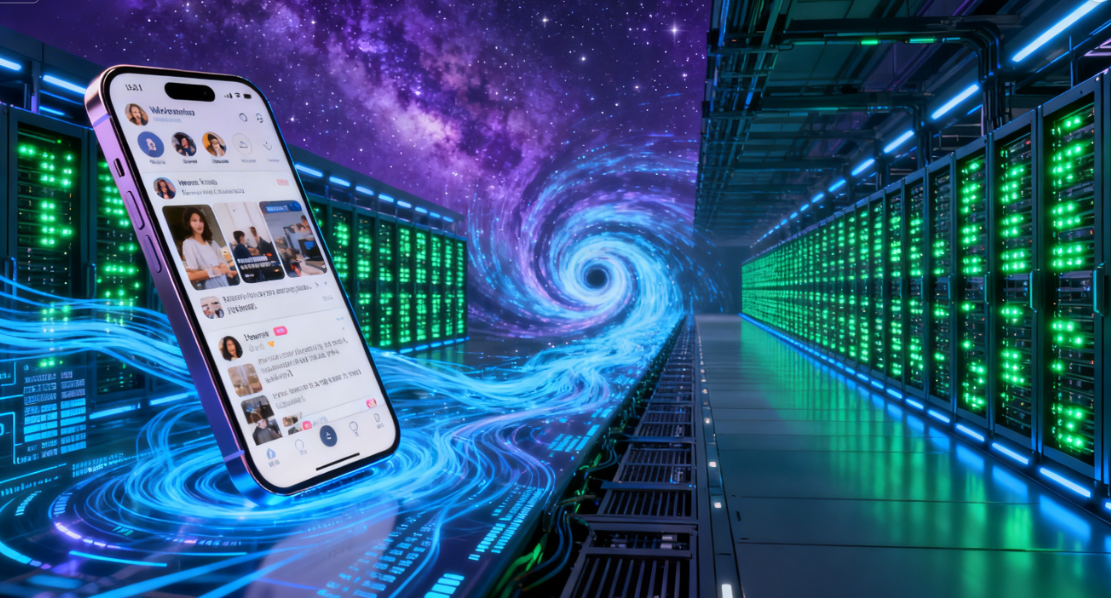Your Phone vs. Data Center Servers: What’s the Difference?
The smartphone in your hand and the data center servers behind the websites you visit and apps you use are both computers at their core. But the difference between them might be as vast as that between your personal car and a heavy-lift rocket.
We use our phones daily for countless tasks: watching videos, gaming, working, chatting... They're so powerful we might wonder, “Are these things actually more capable than some servers?” The answer is: they were born different, each serving distinct purposes. Today, we'll stage a showdown to see how your pocket ‘supercomputer’ differs from the “giant” in the server room.

Round One: Design Philosophy — “All-Rounder Warrior” vs. “Specialized Craftsman”
Your Phone: The Energy-Efficient “All-Rounder Warrior”
The core design goal for smartphones is to achieve balanced performance, outstanding graphics processing, and long battery life within the smallest possible space and power consumption. It's a “jack-of-all-trades,” simultaneously handling countless tasks like communication, display, computation, and sensing. Its chip (SoC) is highly integrated, containing CPUs, GPUs, neural network processors, modems, and more—like a fully equipped Swiss Army knife.
Server: The “Specialized Craftsman” of Pure Performance
The core design goal for data center servers is: pursue ultimate stability, reliability, and massive parallel computing power at any cost. It doesn't need to consider batteries, care about size or noise—its world revolves solely around “24/7 uninterrupted operation” and “processing massive data requests.” Its CPU typically has an extremely high number of cores, though single-core frequency may be lower than a smartphone's, optimized specifically for handling tens of thousands of tasks simultaneously.
Round Two: Performance vs. Computing Power — “The Flash” vs. “The Thousand-Armed Guanyin”
Smartphones: The “Flash” of Solo Combat
Smartphones excel at handling “foreground tasks,” delivering rapid responses with instant touch feedback and smooth UI animations. For single complex tasks (like rendering a game frame), they can unleash formidable single-core performance.
Servers: Teamwork-Driven “Thousand-Armed Guanyin”
A server's strength lies not in how fast it handles a single task, but in its ability to process massive volumes of tasks simultaneously. When you scroll through your social feed, a single server is delivering the same service to tens of thousands—even hundreds of thousands—of users at once. It relies on the parallel computing power of dozens or even hundreds of cores, functioning like an assembly line factory that far surpasses individual efficiency.
Round Three: Storage vs. Memory — “Personal Backpack” vs. “National Granary”
Mobile Phones: The Compact “Personal Backpack”
Top-tier smartphones boast massive storage (e.g., 512GB/1TB) and memory (e.g., 16GB/24GB) by our standards. Yet this resembles a “personal backpack” serving individual needs—its capacity remains finite.
Servers: Boundless “National Granaries”
Server storage is measured in petabytes (1PB = 1024TB), while memory often runs into the hundreds of gigabytes or even terabytes. Connected via high-speed networks into massive storage clusters, they form the “memory palace” underpinning all internet services. Every photo and chat log on your phone ultimately finds its home within these “granaries.”
Round Four: Energy Consumption and Heat Dissipation — “Energy-Efficient Car” vs. “Industrial Electric Furnace”
Mobile Phones: Efficient “Energy-Saving Cars”
Mobile phone power consumption is strictly limited to a few watts. Heat dissipation relies on tiny casings and passive cooling, demanding an extreme level of energy efficiency.
Servers: Voracious “Industrial Electric Furnaces”
A single server easily consumes hundreds or even thousands of watts. The annual electricity consumption of a large data center can rival that of a small to medium-sized city. Consequently, they require specialized cooling systems—powerful fans, water cooling, or even immersion cooling—while server rooms maintain constant temperature and humidity year-round.
Round Five: Reliability — “9-to-5” vs. “Always On”
Mobile Phones: Occasional “Strikes” Are Acceptable
Your phone may occasionally lag, freeze, or shut down due to low battery. While annoying, these issues rarely cause catastrophic consequences.
Servers: The Goal Is “Never-Ending Operation”
Servers must pursue availability exceeding 99.999% (five nines). This means unplanned downtime cannot exceed 5 minutes per year. They employ redundant designs—redundant power supplies, redundant networks, RAID disk arrays—ensuring no single component failure disrupts service. Data security and service continuity are their lifelines.
Each in its own way, building a digital life
They are the perfect symbiosis of the internet world. So stop chasing the answer to “which performs better.” It's like asking: Is a Michelin-starred chef's knife superior to a lumberjack's chainsaw?
Your phone is the “window” and “terminal” to the digital world. It interacts with you, sends your requests far away, and elegantly displays the results.
Data center servers are the “engine” and “foundation” supporting the entire digital world. Behind the scenes, they silently process requests from billions of terminals worldwide, storing humanity's knowledge and memories.
Each fulfills its role, complementing the other. Next time you smoothly scroll through videos or complete a payment in seconds, consider this: it's a flawless symphony performed by the “spirit” in your hand and the “giant” in the distant server room.



